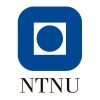
Larotrectinib in Treating Patients With Previously Untreated TRK Fusion Solid Tumors and TRK Fusion...
Central Nervous System NeoplasmInfantile Fibrosarcoma3 moreThis phase II trial studies the side effects and how well larotrectinib works in treating patients with previously untreated TRK fusion solid tumors and TRK fusion acute leukemia that has come back. Larotrectinib may stop the growth of cancer cells with TRK fusions by blocking the TRK enzymes needed for cell growth.

Phase III Trial of Anaplastic Glioma Without 1p/19q Loss of Heterozygosity (LOH)
Brain and Central Nervous System TumorsRATIONALE: Radiation therapy uses high-energy x-rays to kill tumor cells. Drugs used in chemotherapy, such as temozolomide, work in different ways to stop the growth of tumor cells, either by killing the cells or by stopping them from dividing. Giving radiation therapy together with temozolomide may kill more tumor cells. It is not yet known whether giving temozolomide during and/or after radiation therapy is more effective than radiation therapy alone in treating anaplastic glioma. PURPOSE: This randomized phase III trial is studying giving temozolomide during and/or after radiation therapy to see how well it works compared to radiation therapy alone in treating patients with anaplastic glioma.

An Investigational Scan (7T MRI) for the Imaging of Central Nervous System Tumors
Central Nervous System NeoplasmGlioma2 moreThis trial investigates how well 7T MRI scan works in imaging central nervous system tumors. Diagnostic procedures, such as 7T MRI, may help find and diagnose central nervous system tumors and help measure a patient's response to earlier treatment. The goal of this trial is to learn if a new MRI system can provide better quality images than a standard MRI.

Diagnostic Assessment of 18F-fluciclovine and 18F-FDG -PET/MRI of Primary Central Nervous System...
LymphomaNon-Hodgkin1 morePrimary central nervous system lymphoma (PCNSL) is a rare subtype of extranodal non-Hodgkins Lymphoma (NHL) with rising incidence and variable response to treatment. MRI is considered the most useful imaging modality of PCNSL, but conventional MRI has its limitations, and contrast-enhanced MRI sometimes does not clearly differentiate PCNSL from other neoplasm or non-neoplastic diseases. Positron emission tomography (PET) could have a number of potential advantages in refining and improving the management of patients with PCNSL. Because of the rare incidence of PCNSL, the value of PET has however not been well defined in this subtype of lymphomas. There are a few studies that have investigated the role for FDG-PET and amino acid PET in the primary staging/diagnosis and response assessment in PCNSL patients, but the results are inconclusive. Further studies are therefore needed. Previous studies support an integration of both MRI and PET for the routine diagnostic workup and response assessment for PCNSL, and the newly available simultaneous PET/MRI scanners may have the potential to improve imaging baseline accuracy, response assessment and add prognostic value in PCNSL. The main aim of the study is to compare the sensitivity and specificity of a combined PET/MRI examination with the clinical routine MRI examination given to these patients today. It will be investigated whether PET (18F-FDG and 18F-fluciclovine) can provide additional prognostic value at baseline and in response assessment compared to MRI and established pre-treatment prognostic scores in PCNSL, and evaluate which PET/MRI parameters that are best suited as an imaging biomarker for progression-free survival.

Mapping Draining Lymph Nodes in CNS Malignancies
Central Nervous System NeoplasmsCentral Nervous System TumorThe purpose of this research study is to determine whether the lymph nodes that drain a brain tumor can be detected by imaging after injection of a substance called Tc-99m tilmanocept directly into the brain tissue around the tumor. Tc-99m tilmanocept is a radioactive substance that is used to find lymph nodes by injecting it and then scanning the body with a device that can trace its radioactivity. In this study, the investigators are looking to see how long it takes the Tc-99m tilmanocept to travel from the tumor to the lymph nodes. The investigators will be using it to map lymph nodes as they relate to specific brain areas.

Radiolabeled Monoclonal Antibody Therapy in Treating Patients With Refractory, Recurrent, or Advanced...
Brain and Central Nervous System TumorsNeuroblastoma1 moreThe purpose of this study is to find a safe dose of a new medicine called antibody 8H9. Antibodies are made by the body to fight infections and in some cases, to fight tumors. The antibody 8H9 is made by mice and can attack many kinds of tumors. 8H9 antibody can have a dose of radiation attached to it called 131-I. 131I-8H9 has been given in the vein to patients to find cancer cells. This is the first study using 131I-8H9 in the fluid in the spine to kill cancer cells. 131-I is a beta emitting isotope used extensively for radiation targeted therapies.

Data Collection for the Assessment of Acute and Late Normal Tissue in Patients Treated With Proton...
Breast CarcinomaEsophageal Carcinoma7 moreThis study collects information on the side effects of proton therapy and detailed information on the proton therapy treatment plan itself. This may help researchers develop methods to predict the risk of side effects for future patients and learn the long-term benefit of proton therapy.

SYNERGY-AI: Artificial Intelligence Based Precision Oncology Clinical Trial Matching and Registry...
CancerMetastatic45 moreInternational registry for cancer patients evaluating the feasibility and clinical utility of an Artificial Intelligence-based precision oncology clinical trial matching tool, powered by a virtual tumor boards (VTB) program, and its clinical impact on pts with advanced cancer to facilitate clinical trial enrollment (CTE), as well as the financial impact, and potential outcomes of the intervention.

Computer-based Neurocognitive Assessment in Children With Central Nervous System Tumors Receiving...
Central Nervous SystemThis study will explore neurocognitive performance in pediatric brain tumor patients receiving proton beam radiation therapy (PBRT). The investigators goal is to gather baseline neurocognitive testing prior to the completion of the first week of radiation therapy along with follow-up testing 6-12 months after the completion of radiation and serial annual testing thereafter. With these data the investigators plan to evaluate the effects of PBRT on neurocognitive performance as it relates to patients' age at diagnosis, tumor location, and radiation dose. Modeling studies have demonstrated that PBRT could improve neurocognitive outcomes, but there is a paucity of prospectively-collected patient data. The investigators are uniquely positioned to address this important question given the busy pediatric central nervous system (CNS) tumor service, the delivery of proton therapy at the S. Lee Kling Proton Therapy Center at Barnes-Jewish Hospital, and the multi-disciplinary research team with extensive experience into the late effects of therapy as it relates to neurocognition.

Biological Characterisation of High Risk CHildhood Cancer in Children, Adolescents and Young Adults...
NeuroblastomaRhabdomyosarcoma4 moreMethodology: Prospective, multicentric, open, non-randomised, non-therapeutic, interventional study
